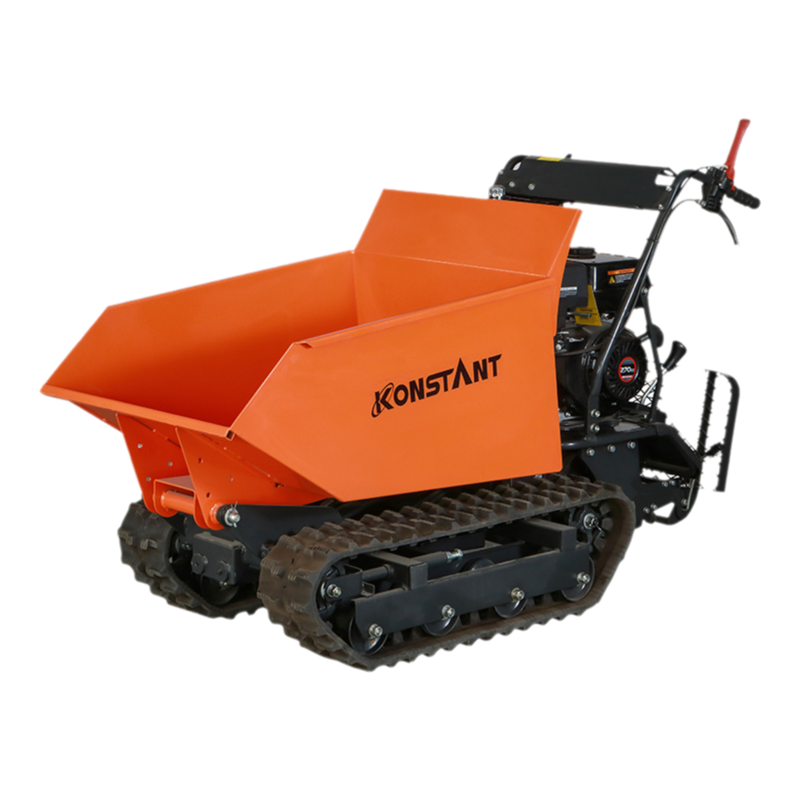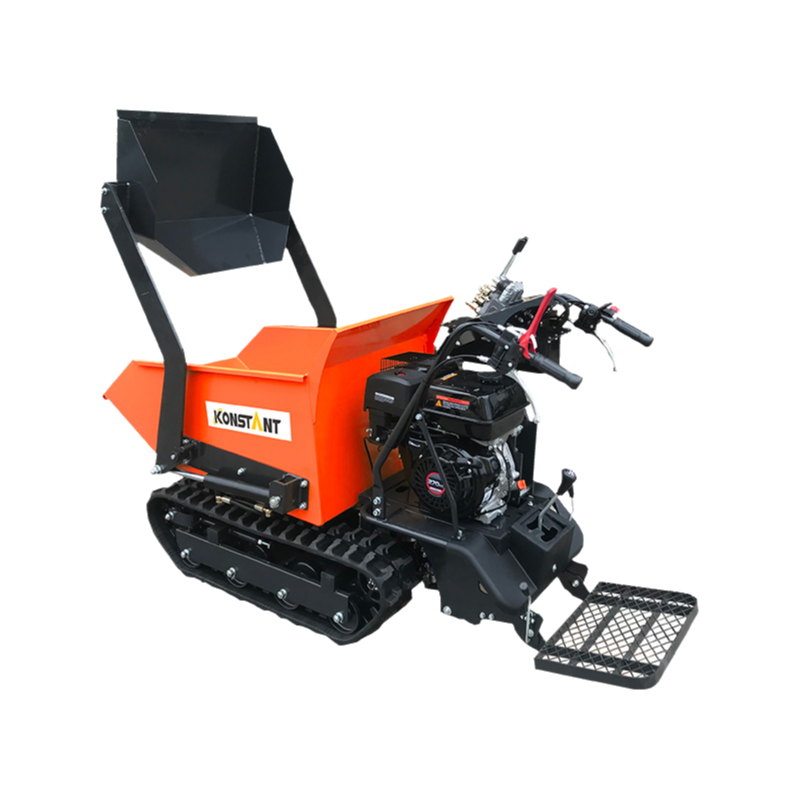Provide you with the latest enterprise and industry news
What is the Gasoline Engine Mini Dumper?
Posted by Admin
1. Product Positioning and Main Applications
The Gasoline Engine Mini Dumper is a gasoline-powered mini dump truck designed for construction sites, landscaping, road maintenance, trackside operations, and narrow environments such as stone walls and footpaths.
It features strong traction and efficient loading and unloading capabilities, enabling heavy-duty operations such as transporting and dumping in confined spaces.
2. Key Technical Features
Gasoline Engine: Provides reliable power output, suitable for long-term, high-load operation.
Chain Drive 4WD: Four-wheel drive combined with a chain drive ensures stable traction on challenging surfaces such as mud and slopes.
Maintenance-free lead-acid batteries: Used for starting and auxiliary electrical systems, the maintenance-free design reduces daily maintenance costs.
Permanent Magnet Brushless Motor: Improves drive efficiency, reduces mechanical wear, and reduces maintenance requirements.
3. Design Advantages
Compact Structure: The small body size facilitates turning and parking in narrow passages. High Dumping Height: The dumping height reaches 1447mm, allowing for unloading large amounts of material at once.
Safe and Easy Operation: The ergonomic seat, simple control panel, and quick-release protective cover ensure safe and efficient operation.
4. Manufacturing and Brand Background
Developed and manufactured by WUXI KONSTANT POWER TECH CO., LTD. The company boasts modern production facilities and advanced manufacturing equipment, and employs an experienced engineering team committed to continuous innovation and quality improvement.
How to Change Fuel and Engine Oil?
The way of change fuel and engine oil
1. Preparation and Safety Precautions
Park the machine in a flat, well-ventilated area, turn off the engine, and remove the key.
Wear protective gloves and goggles to prevent skin or eye irritation from fuel or oil splashes.
Prepare the appropriate fuel and engine oil specifications, as well as the appropriate filters (if required).
2. Fuel Change Procedure
Open the left or rear fuel tank cap and drain the old fuel using the designated filler port or a hose (use a suction pump if any residue remains).
Inspect the fuel tank for debris or sediment, and wipe with a clean cloth if necessary.
Fill the tank to the full mark using the fuel grade recommended in the vehicle manual. Ensure the filler cap is tightened to prevent leaks.
3. Engine Oil Change Procedure
Locate the drain plug on the bottom of the engine and use a suitable wrench to open the drain plug and allow the old oil to drain completely.
Also, check the oil filter and replace it if necessary to ensure clean oil flow.
After closing the drain plug, fill with new engine oil to the upper limit marked on the dipstick, using the viscosity recommended in the vehicle manual (e.g., 10W-30).
Start the engine for a few minutes, then shut it down. Check the dipstick to confirm the correct level. If there is any leak, address it immediately.
4. Inspection and Subsequent Maintenance
After refueling, check that the fuel tank and oil filler neck are properly sealed to prevent leakage.
Record the replacement time and mileage to facilitate subsequent maintenance planning.
Regularly check the quality of fuel and oil to avoid using inferior fuel or oil, which can degrade engine performance.

 English
English русский
русский Français
Français Español
Español Deutsch
Deutsch















